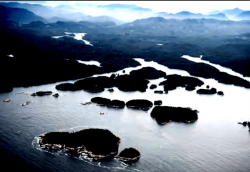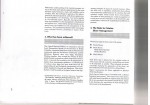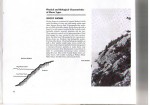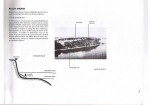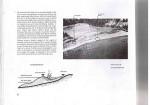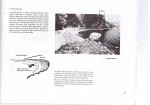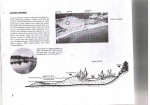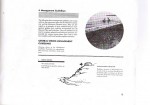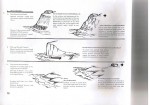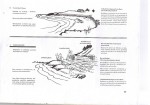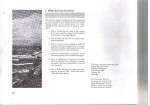Environmental Sustainability is now on the forefront of political agendas around the world, and is at the centre of concern for many of the world’s population. Due to obvious impacts that the environment is reflecting back on humans, it is not a topic which will go out of fashion in the near future. In this resource, the need to provide a stimulating experience to raise awareness in students about the value of our marine resources and the reinforcement of the role for education for sustainable development is emphasized . Where possible, global examples are brought in to emphasize the interdependence of all the world oceans.
- 2.1 The wide diversity of ocean ecosystems: Within our immediate ocean we have a wide variety of ecosystem types.
- 2.1.1 Coastal Ecosystems: There is a wide contrast in the character of our Coastline in British Columbia.
- 2.1.0.1 Kelp Forest : Many issues are brought to light when considering these ecosystems: The effects of contaminants, the effects of introduced species, the ecosystem services provided in the form of habitat for other species.
- 2.1.0.2 Rocky Shore, (sub and intertidal) Tidepools and rocky shore can show biodiversity as well as food web relationships. In addition, the effect of pollution, chemical and oil become crucial in these habitats.
- 2.1.0.3 Beaches: sand and pebble : Geological processes create them and human actions can destroy. Their role as habitat for organisms, the importance of sedimentation and habitat and the energy dynamics of a strand line with natural and human debris.
- 2.1.2 Benthic areas.
- 2.1.3 Other ecosystems of the global seas, (ex. Arctic ice, Mangroves, coral reefs).
- 2.1.4 Pelagic – Open ocean ecosystems. Plankton and its the interaction with ocean currents, can be indicators of food webs gone wrong.
- 2.1.5 Abyssal Ecosystems :In the inland and outer coastal areas, B.C., has a number of significant regions.
We have individuals who are “doing sustainability” in their professional or personal lives in BC. Examples are “Dr. Pauly” .. see Fishing Down Food webs or Dr.Chan ..see Ecosystem Services: , Dr. Andrew Weaver actively involved in researching Climate Change at the University of Victoria, and First Nations members who are educating about First Nations Marine History and Culture.
See also the page on Individuals as role models: for marine environmental sustainability.
SUSTAINABILITY IN EDUCATION:
Linkage of specific educational objectives with experiences in which students from K to 12 can participate are outlined here.
Over the past 10 years or more the possibility of achieving the goals of ecological sustainability for the earth are tied closely to education , see the Background Rationale for the role of Education:
The BC Curriculum section contains links from Objectives to resources that they could find in the Marine Centre.
One document which provides the clearest goals related to sustainability is the
Earth Charter, http://www.earthcharterinaction.org/2000/10/the_earth_charter.html The following points are extracted to highlight the many ways that it is appropriate for the activities associated with the NMC.
- Respect Earth and life in all its diversity.
a. Recognize that all beings are interdependent and every form of life has value regardless of its worth to human beings - Care for the community of life with understanding, compassion, and love.
a. Accept that with the right to own, manage, and use natural resources comes the duty to prevent environmental harm and to protect the rights of people
- Build democratic societies that are just, participatory, sustainable, and peaceful.
b. Promote social and economic justice, enabling all to achieve a secure and meaningful livelihood that is ecologically responsible. - Secure Earth’s bounty and beauty for present and future generations.
a. Recognize that the freedom of action of each generation is qualified by the needs of future generations.
b. Transmit to future generations values, traditions, and institutions that support the long-term flourishing of Earth’s human and ecological communities.
In order to fulfill these four broad commitments, it is necessary to focus on the concept of
ECOLOGICAL INTEGRITY
5. Protect and restore the integrity of Earth’s ecological systems, with special concern for biological diversity and the natural processes that sustain life.
- a. Adopt at all levels sustainable development plans and regulations that make environmental conservation and rehabilitation integral to all development initiatives
- b. Establish and safeguard viable nature and biosphere reserves, including wild lands and marine areas, to protect Earth’s life support systems, maintain biodiversity, and preserve our natural heritage
- c. Promote the recovery of endangered species and ecosystems
- d. Control and eradicate non-native or genetically modified organisms harmful to native species and the environment, and prevent introduction of such harmful organisms
- e. Manage the use of renewable resources such as water, soil, forest products, and marine life in ways that do not exceed rates of regeneration and that protect the health of ecosystems
- f. Manage the extraction and use of non-renewable resources such as minerals and fossil fuels in ways that minimize depletion and cause no serious environmental damage
6. Prevent harm as the best method of environmental protection and, when knowledge is limited, apply a precautionary approach
- a. Take action to avoid the possibility of serious or irreversible environmental harm even when scientific knowledge is incomplete or inconclusive
- b. Place the burden of proof on those who argue that a proposed activity will not cause significant harm, and make the responsible parties liable for environmental harm
- c. Ensure that decision making addresses the cumulative, long-term, indirect, long distance, and global consequences of human activities
- d. Prevent pollution of any part of the environment and allow no build-up of radioactive, toxic, or other hazardous substances
- e. Avoid military activities damaging to the environment
7. Adopt patterns of production, consumption, and reproduction that safeguard Earth’s regenerative capacities, human rights, and community well-being.
- a. Reduce, reuse, and recycle the materials used in production and consumption systems, and ensure that residual waste can be assimilated by ecological systems
- b. Act with restraint and efficiency when using energy, and rely increasingly on renewable energy sources such as solar and wind
- c. Promote the development, adoption, and equitable transfer of environmentally sound technologies
- d. Internalize the full environmental and social costs of goods and services in the selling price, and enable consumers to identify products that meet the highest social and environmental standards
- e. Ensure universal access to health care that fosters reproductive health and responsible reproduction
- f. Adopt lifestyles that emphasize the quality of life and material sufficiency in a finite world
8. Advance the study of ecological sustainability and promote the open exchange and wide application of the knowledge acquired.
- a. Support international scientific and technical cooperation on sustainability, with special attention to the needs of developing nations.
- b. Recognize and preserve the traditional knowledge and spiritual wisdom in all cultures that contribute to environmental protection and human well-being.
- c. Ensure that information of vital importance to human health and environmental protection, including genetic information, remains available in the public domain



